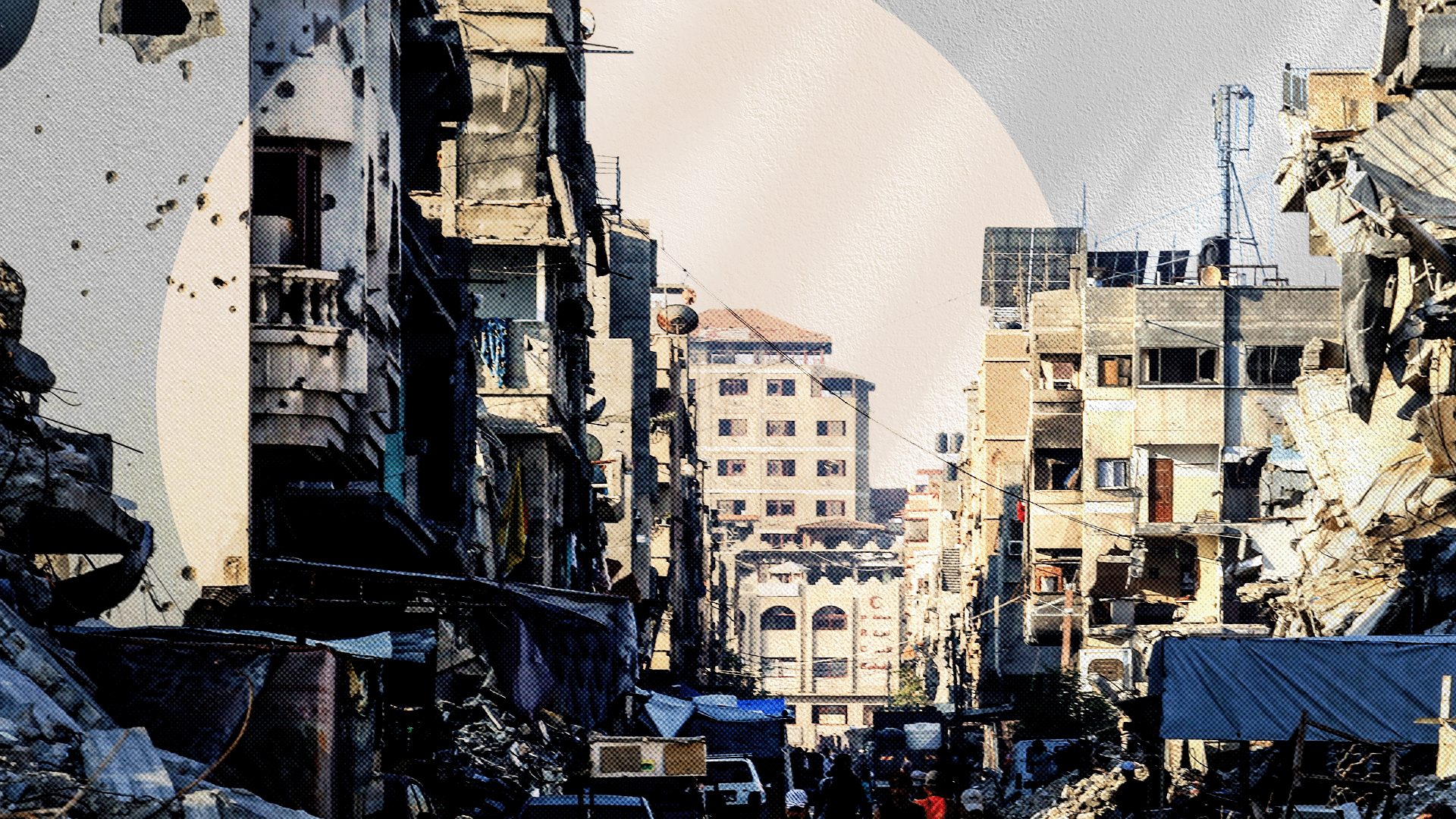Gaza truce: Palestinians search for loved ones and check damaged homes
- Published
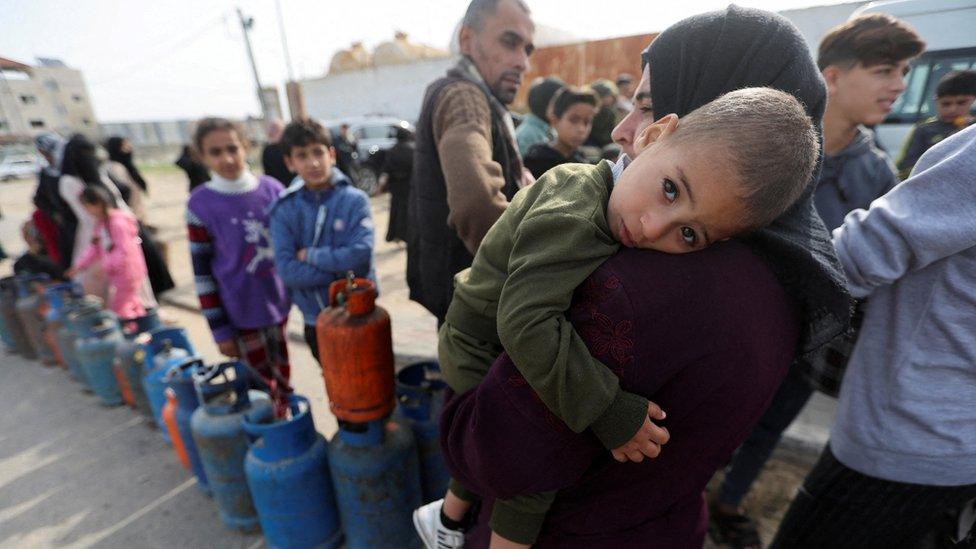
People have been waiting in long queues for fuel and aid in the Gaza Strip, as the four-day truce between Israel and Hamas appears to hold for a second day.
Gazans are trying to make the most of the pause in fighting to gather much-needed supplies, search for loved ones and even take a walk by the sea.
Some have visited their homes - or what is left of them - to see damage and recover what they can find.
The truce has also seen more supplies allowed into the Palestinian territory.
Israel imposed a blockade on the Gaza Strip as it launched its retaliatory operation aimed at eliminating Hamas, following its 7 October attack in which militants killed at least 1,200 people in southern Israel and took more than 240 hostages.
Since then, more than 14,500 people have been killed in Gaza, according to the Hamas-run health ministry.
The four-day truce, mediated by Qatar, is meant to result in the release of 50 hostages and 150 Palestinian prisoners and detainees held in Israeli jails.
On the first day of the truce on Friday, around 150 trucks carried supplies into the Gaza Strip from Egypt.
While it was the biggest amount of aid to enter Gaza since the first convoy crossed the border on 21 October, the UN says more is still needed.
Communications are largely down across Gaza, however pictures emerging from the Strip show long queues for fuel and other supplies in Rafah, in the south of the territory.
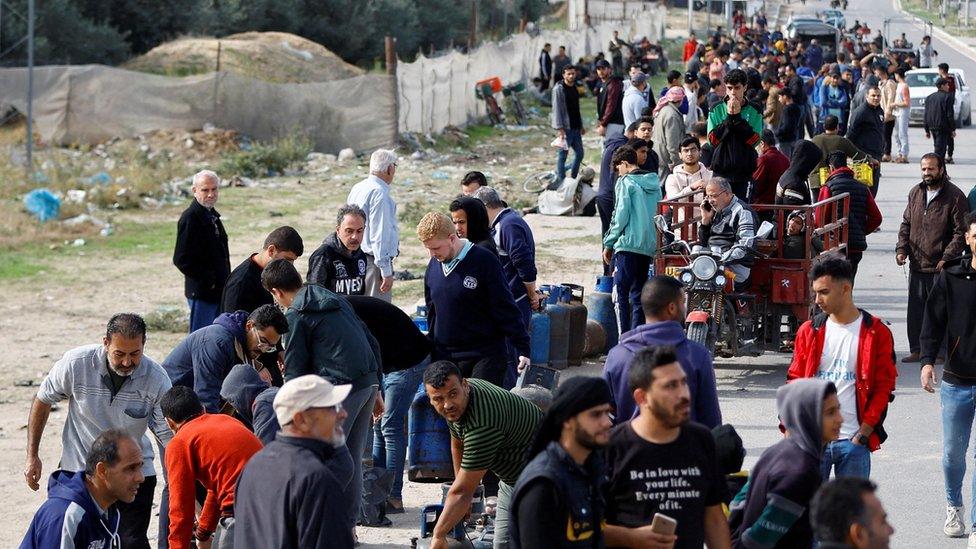
People have been queuing for fuel as four trucks carrying cooking gas and for containing fuel entered Gaza on Saturday
Trucks have been waiting on the Egyptian side of the Rafah crossing early on Saturday morning, ready to carry in food, water, fuel and medical supplies.
The Israeli military confirmed that four tankers containing fuel and another four carrying cooking gas entered Gaza on Saturday morning.
It is a slow process to get over the border with every vehicle checked by the Israeli military before making the crossing.
The Palestinian Red Crescent said 61 aid trucks carrying food supplies, drinking water and medicines had set off from Rafah towards the north of Gaza.
It said this would be the largest aid convoy to reach the north since the beginning of the fighting.
The Israeli government said it was expecting 226 aid trucks to enter through the Nitzana crossing in southern Israel.
"This will include 113 trucks containing food, seven containing medical supplies, 27 containing water, 43 containing various supplies for shelter, 25 trucks containing hygiene supplies," spokesman Eytan Schwartz said.
An additional 11 Egyptian trucks are carrying medical supplies to the Emirati hospital, he said.
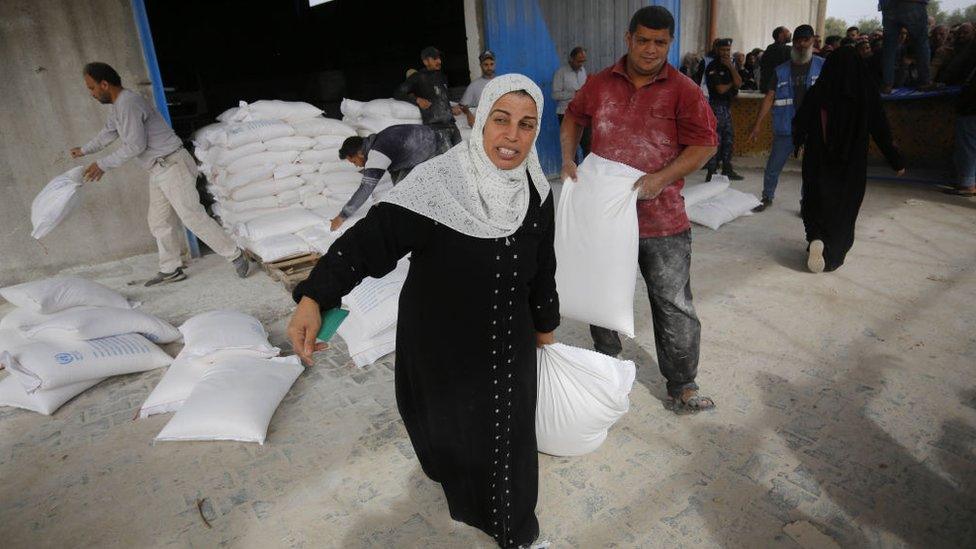
A woman collects a bag of flour at the Nuseirat refugee camp in Deir Al Balah, Gaza
Despite joy for many at the cessation of fighting, it has been mixed with sadness after many returned to their destroyed homes to save what remained and retrieve the bodies of their loved ones from under the rubble.
Tahani al-Najjar used the calm of the truce to return to the ruins of her Khan Younis home on Saturday, Reuters news agency reported.
The 58-year-old pulled several intact cups from the rubble of her home, which she said had been destroyed by an Israeli air strike which also killed seven members of her family.
In the southern city some people are living in makeshift tents outside the Nasser Hospital as they wait to decide whether to return to the north of the Strip.
Crates of tomatoes, lemons, aubergines, peppers, onions and oranges could be seen at a street market in the city.
Juliette Touma, spokesperson for the UN Relief and Works Agency, Unrwa, told the BBC the situation on the ground was "absolutely terrible" and, while the aid which had reached Gaza was welcome, the organisation was ready to receive much more.
She said there was a need for basic hygiene items as well as more medical equipment, fuel and food.
People have described having to flee with only the clothes on their backs and most have been unable to wash properly.
Many public shelters are extremely overcrowded, Unrwa said, with its schools and other facilities housing more than a million displaced people.

More on Israel-Gaza war
Follow live: Latest updates
Watch: Moment Israeli boy reunites with dad after hostage ordeal
Gaza Strip mapped: Life in Gaza under siege
Explained: Who are the released hostages?
Israel-Gaza briefing: When truce ends, the decisive next phase of war begins
History behind the story: The Israel-Palestinian conflict

Related topics
- Published24 November 2023
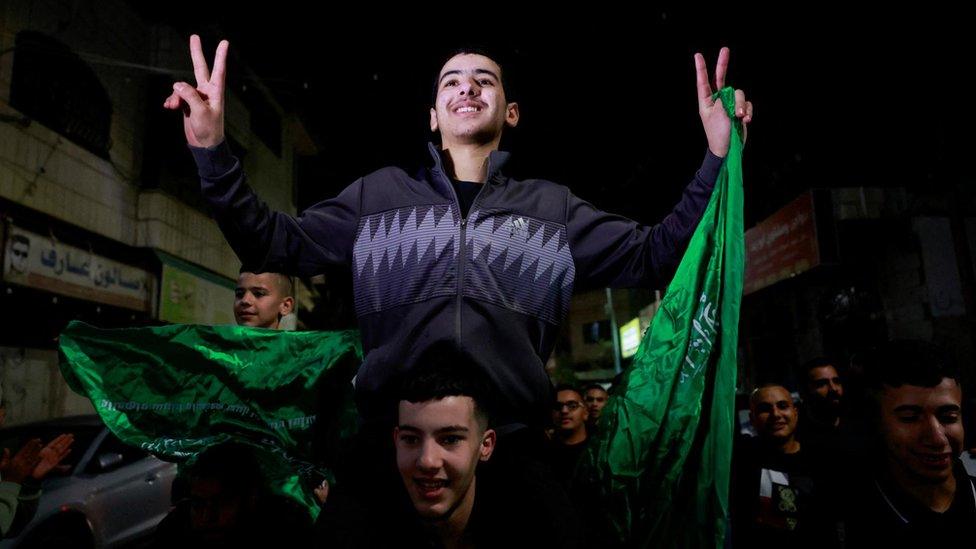
- Published23 November 2023

- Published16 January
